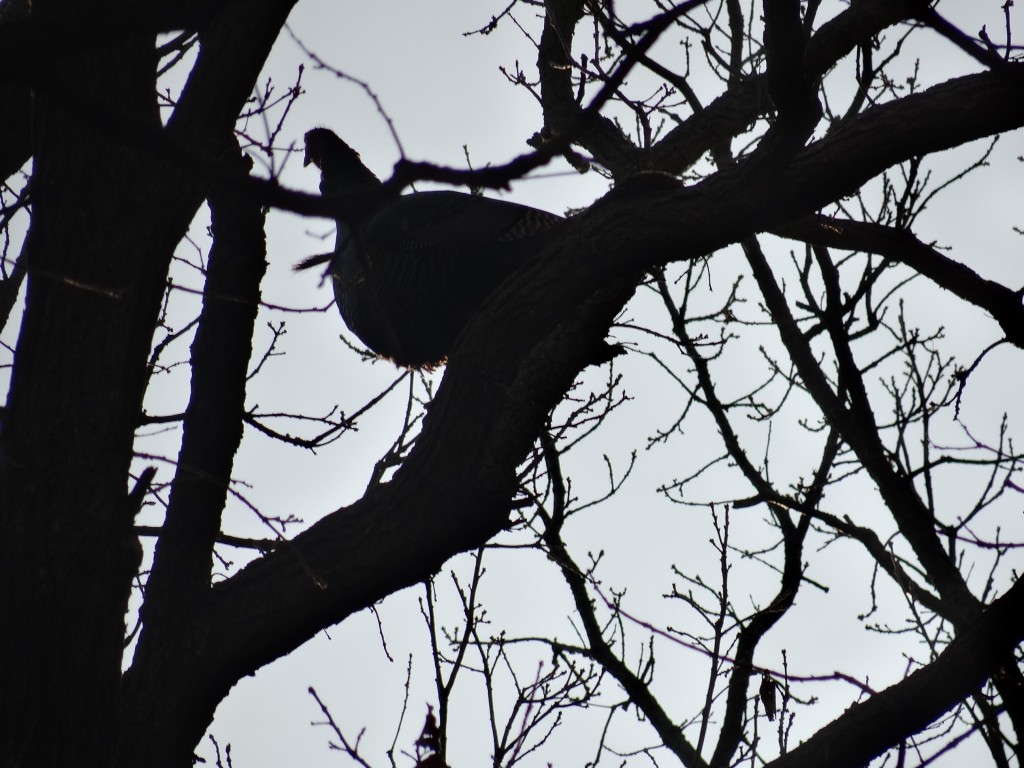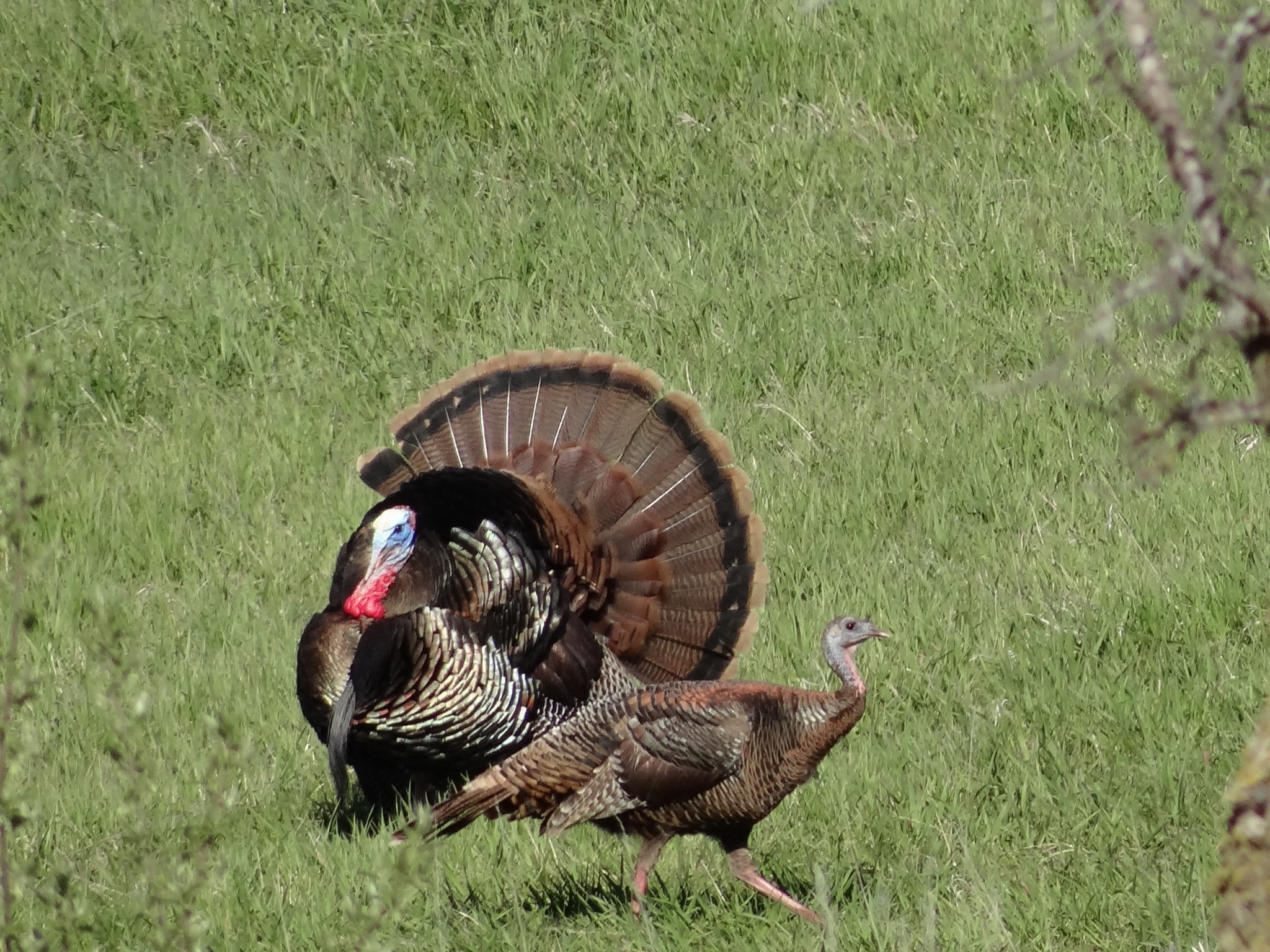It invokes such strong feelings of excitement that it escapes words. It is a crazy sound in nature, really, perhaps even a bit comical. The sound, denoting spring, is actually a loud, shrill, descending, throaty jumble of chords that lasts about 1-2 seconds.
For those of us who enjoy spring wild turkey hunting, the gobble of the male wild turkey is at its essence.
A spring wild turkey hunt is about communicating, interacting and connecting with the North America’s largest upland game bird. And, that gobble is the bridge between the turkey and the hunter. It’s the male wild turkey’s gobble that causes us spring turkey hunters to arise blurry-eyed in the darkness of an early spring morning to prepare to deal with the elements in order to harvest the producer of that intriguing sound, setting up and calling near his roost. There is probably no experience as electrifying as hearing multiple gobbles echo through the woods in the gray of dawn.
Male wild turkeys often gobble from their treetop roosts in spring, where the sound carries better than on the ground. They use it to attract females and respond to other males, potential rivals. With favorable conditions, the male turkey’s stirring gobble can be heard more than one mile away from a given spot!

What is truly unforgettable in spring wild turkey hunting though is a male wild turkey vociferously belting out a loud, boisterous gobble near your hunting blind. The exhilaration felt by that noise fills the body with adrenaline!
Like other wildlife, wild turkeys are competitive creatures. As with any society or group, a hierarchy exists among turkeys, and each flock is going to have a distinct pecking order. Once a large, long-bearded adult male wild turkey establishes his dominance, he fights day in and day out to maintain that status. Juvenile male turkeys, known as jakes, will also sound off like this, but, in many instances, they are just spectators during their first year. This primal instinct in the mating cycle is the reason that mimicking the sound of another gobbler can force a tight-beaked, quiet gobbler to often reveal his location.

The turkey hunter’s goal is to sound like a lonely hen ready for a springtime courtship rendezvous. The male wild turkey uses his gobble to entice a harem of hens while also trying to sound tough enough to keep competing males away. The hens are also vocalizing throughout this springtime breeding ritual, conveying their availability and interest to the surrounding gobblers. The turkey hunter becomes interwoven in an intense mix of passion, relationships, competition, battles and breakup, and from that reality show he hopes to outwit a a tom turkey comprised by overwhelming desire.

As an avid spring wild turkey hunter and wildlife viewer in Nebraska, the gobble is the sound I never tire of hearing; it is a sound that means spring in the countryside; it is a sound that I treasure; it is one of the last sounds I would like to hear on this earth before I pass.
The post It’s All About The Gobble appeared first on NEBRASKALand Magazine.























